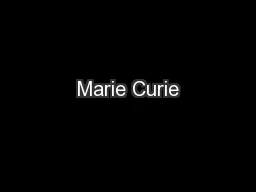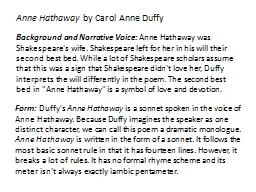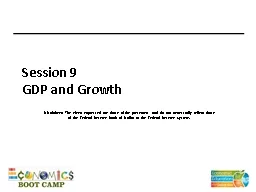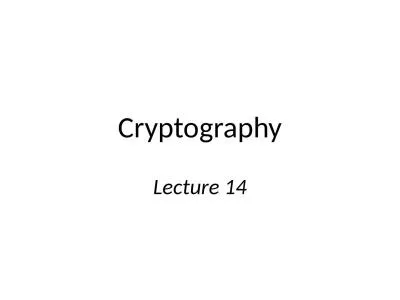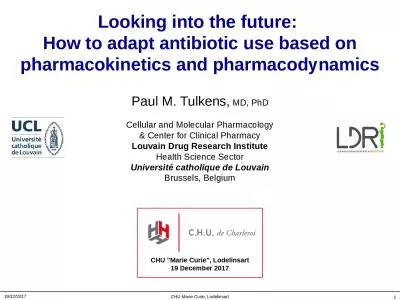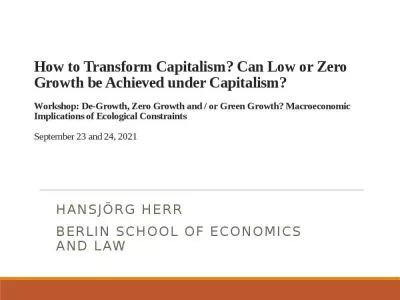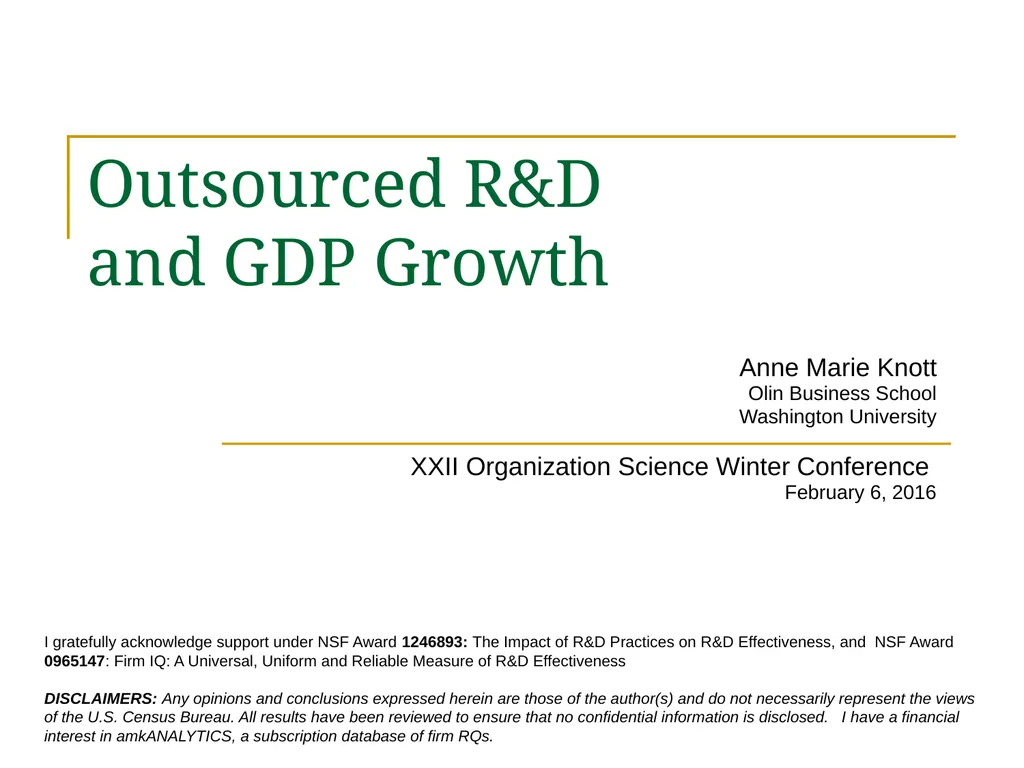
Author : ellena-manuel | Published Date : 2025-06-23
Description: Outsourced RD and GDP Growth Anne Marie Knott Olin Business School Washington University XXII Organization Science Winter Conference February 6, 2016 I gratefully acknowledge support under NSF Award 1246893: The Impact of RD Practices onDownload Presentation The PPT/PDF document "" is the property of its rightful owner. Permission is granted to download and print the materials on this website for personal, non-commercial use only, and to display it on your personal computer provided you do not modify the materials and that you retain all copyright notices contained in the materials. By downloading content from our website, you accept the terms of this agreement.
Here is the link to download the presentation.
"Outsourced R&D and GDP Growth Anne Marie Knott"The content belongs to its owner. You may download and print it for personal use, without modification, and keep all copyright notices. By downloading, you agree to these terms.

